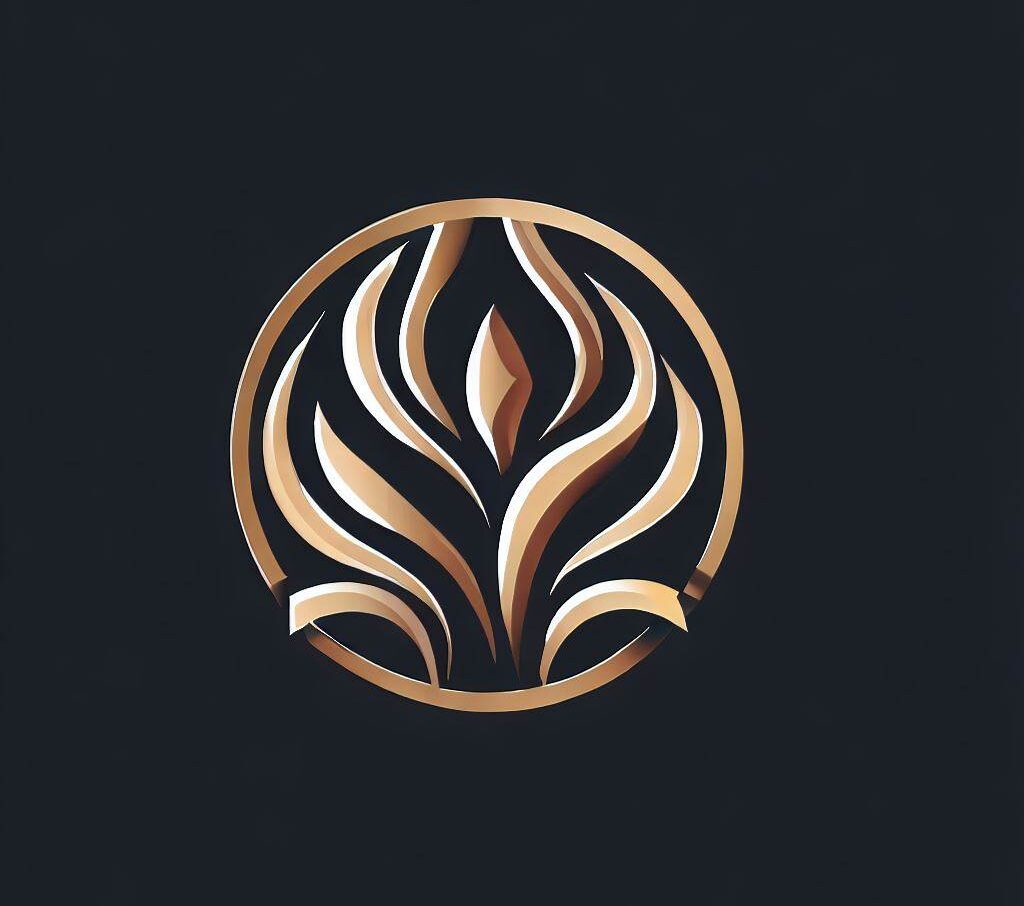Welcome to this spiritual journey where we will explore the biblical meaning of turquoise. Throughout the Bible, turquoise is mentioned, and its significance is not limited to its aesthetic beauty. It carries symbolic value, representing spiritual connection, healing, and protection. Join me as we delve into the deeper meanings behind turquoise in the Bible.
Key Takeaways:
- Turquoise holds spiritual significance in the Bible beyond its beauty
- It represents healing, protection, and spiritual connection
- Through our exploration, we will gain a deeper understanding of the biblical meaning of turquoise
The Significance of Turquoise in Scripture
As we explore the biblical meaning of turquoise, we must first examine its significance in scripture. Turquoise is mentioned several times throughout the Bible, and each reference carries its own unique meaning.
One example of turquoise in the Bible is in the book of Exodus, where it is listed as one of the precious stones used in the breastplate of the high priest. Turquoise is also referenced in the book of Ezekiel, where it is used to describe the throne of God, emphasizing its importance and association with divinity.
Furthermore, turquoise is often associated with healing and protection, as seen in the book of Psalm 91:13, which states, “You will tread on the lion and the cobra; you will trample the great lion and the serpent.” This passage is often interpreted as a metaphor for the protective and healing properties attributed to turquoise.
The Significance of Turquoise in Scripture
Throughout the Bible, turquoise holds significant meaning and symbolism. It represents divinity, protection, and healing, making it a powerful symbol of spiritual connection and guidance. Its presence in different contexts underscores its importance and relevance to the biblical narrative.
The Spiritual Meaning of Turquoise in the Bible
As we explore the biblical meaning of turquoise, it becomes apparent that this gemstone holds spiritual significance in the Bible. Turquoise is often associated with the divine and represents spiritual connection and communication.
In the book of Exodus, God instructs Moses to create a breastplate for Aaron, the high priest, adorned with precious stones, including turquoise. The breastplate was a symbol of Aaron’s spiritual authority and connection to God and was considered a powerful tool for communication with the divine.
In addition to its association with spiritual communication, turquoise also represents healing and protection. The book of Ezekiel depicts a vision of a holy city with gates made of turquoise, symbolizing the city’s protection and safety.
Overall, the spiritual meaning of turquoise in the Bible is multifaceted and deeply connected to our relationship with the divine. By embracing the symbolism of turquoise, we can enhance our spiritual journey and strengthen our connection with God.
Turquoise Symbolism in Biblical Texts
In the Bible, turquoise is often used symbolically to convey different meanings. One of the most significant interpretations of turquoise is its representation of heaven. In Exodus 24:10, we read, “and they saw the God of Israel and there was under his feet as it were a paved work of a sapphire stone, and as it were the body of heaven in his clearness.” Here, the paved work of a sapphire stone is thought to represent heaven, and some scholars have suggested that this stone may have been turquoise due to its blue-green color.
Turquoise is also associated with the tribe of Judah. In the book of Exodus, when Moses blesses the twelve tribes, he blesses Judah with the words “And for the precious things of the earth and the fullness thereof, and for the good will of him that dwelt in the bush: let the blessing come upon the head of Joseph, and upon the top of the head of him that was separated from his brethren. His glory is like the firstling of his bullock, and his horns are like the horns of unicorns: with them he shall push the people together to the ends of the earth: and they are the ten thousands of Ephraim, and they are the thousands of Manasseh” (Deuteronomy 33:16-17). The mention of horns and unicorns is thought to be a reference to the strength and power of Judah as a tribe. Turquoise was also used as an adornment on the priestly breastplate, which represented the twelve tribes of Israel (Exodus 28:15-21).
Another interpretation of turquoise in the Bible is its association with water. The gemstone’s blue-green color reflects the color of water, which is a symbol of life and purity. In the book of Ezekiel, the prophet describes seeing a vision of water flowing from the temple, and its color is likened to “the color of a beryl stone” (Ezekiel 47:1). Some scholars believe that this description may be referring to turquoise, suggesting that the gemstone represents the life-giving properties of water.
Overall, the symbolism of turquoise in the Bible is varied and complex, representing different concepts such as heaven, power, and water. Its beauty and spiritual significance continue to captivate and inspire people today.
Biblical References to Turquoise
There are several instances in the Bible where turquoise is referenced, each time imbuing the gemstone with symbolic and spiritual significance. In the book of Exodus, when Moses is receiving instructions on building the Tabernacle, turquoise is listed among the materials to be used in constructing the breastplate of the high priest.
“And thou shalt set in it settings of stones, even four rows of stones: the first row shall be a sardius, a topaz, and a carbuncle: this shall be the first row. And the second row shall be an emerald, a sapphire, and a diamond. And the third row a ligure, an agate, and an amethyst. And the fourth row a beryl, and an onyx, and a jasper: they shall be set in gold in their inclosings. And the stones shall be with the names of the children of Israel, twelve, according to their names, like the engravings of a signet; every one with his name shall they be according to the twelve tribes.”
(Exodus 28:17-21)
Here, turquoise is called a “ligure,” and it is listed among other precious stones to be used in the breastplate.
In the book of Ezekiel, turquoise is used to describe the appearance of God’s throne. Ezekiel describes the throne as having a “likeness as the appearance of a man” sitting on it, and then says:
“And I saw as the colour of amber, as the appearance of fire round about within it, from the appearance of his loins even upward, and from the appearance of his loins even downward, I saw as it were the appearance of fire, and it had brightness round about. As the appearance of the bow that is in the cloud in the day of rain, so was the appearance of the brightness round about. This was the appearance of the likeness of the glory of the Lord.”
(Ezekiel 1:27-28)
The Hebrew word used for “amber” in this passage can also be translated as “gleaming” or “brilliant,” and some scholars suggest that it may actually refer to turquoise rather than amber.
Finally, in the book of Job, Job laments his own suffering and compares it to the beauty of various precious stones, including turquoise:
“But where shall wisdom be found? And where is the place of understanding? Man knoweth not the price thereof; neither is it found in the land of the living. The depth saith, It is not in me: and the sea saith, It is not with me. It cannot be gotten for gold, neither shall silver be weighed for the price thereof. It cannot be valued with the gold of Ophir, with the precious onyx, or the sapphire. The gold and the crystal cannot equal it: and the exchange of it shall not be for jewels of fine gold. No mention shall be made of coral, or of pearls: for the price of wisdom is above rubies. The topaz of Ethiopia shall not equal it, neither shall it be valued with pure gold. Whence then cometh wisdom? and where is the place of understanding? Seeing it is hid from the eyes of all living, and kept close from the fowls of the air. Destruction and death say, We have heard the fame thereof with our ears. God understandeth the way thereof, and he knoweth the place thereof. For he looketh to the ends of the earth, and seeth under the whole heaven; To make the weight for the winds; and he weigheth the waters by measure. When he made a decree for the rain, and a way for the lightning of the thunder: Then did he see it, and declare it; he prepared it, yea, and searched it out. And unto man he said, Behold, the fear of the Lord, that is wisdom; and to depart from evil is understanding.”
(Job 28:12-28)
Here, turquoise is mentioned alongside other precious stones like onyx and sapphire, emphasizing its value and beauty.
Biblical Interpretation of Turquoise
As we delve deeper into the biblical meaning of turquoise, it’s important to examine the various interpretations offered by scholars and theologians throughout history. One interpretation suggests that turquoise represents the sky and the heavens, symbolizing the divine and the spiritual realm. This is supported by the gemstone’s blue-green hues, reminiscent of the sky and the ocean.
Another interpretation links turquoise to the planet Venus, which was associated with love, beauty, and fertility in ancient times. This connection may explain why turquoise was often worn by brides and expectant mothers in certain cultures. In this context, turquoise represents love, protection, and abundance.
Some scholars also suggest that turquoise symbolizes forgiveness and reconciliation. This interpretation is derived from the story of Jacob and Esau in the book of Genesis. After years of estrangement, Jacob sends gifts to Esau, including “female goats and male goats, female servants and male servants, and camels and donkeys” (Genesis 32:14). Among these gifts are “turquoise, onyx, and marble” (Genesis 32:11), which some scholars interpret as a gesture of reconciliation and a symbol of forgiveness.
Overall, the interpretations of turquoise in the Bible are multifaceted and complex, reflecting the diverse meanings and symbolism attributed to this gemstone throughout history. By examining these interpretations, we gain a deeper understanding of the spiritual significance of turquoise and its place in the biblical narrative.
Turquoise and Its Significance in the Bible
Turquoise is a gemstone that holds a special spiritual significance in the Bible. It symbolizes healing, protection, and spiritual connection. As we explore its significance in Scripture, we gain a deeper understanding of the role it plays in our lives today.
The use of turquoise in biblical texts is significant. From the book of Exodus to the book of Revelation, we see turquoise’s symbolism and significance in various contexts. The gemstone’s use in the breastplate worn by Aaron, the high priest, is a clear representation of the importance attributed to it in religious contexts.
The presence or absence of turquoise in specific biblical texts carries deep symbolic meaning. For instance, in the book of Job, the absence of turquoise in a list of precious stones highlights the loss and desolation the protagonist experiences. In contrast, turquoise’s presence in a similar list in Ezekiel 28:13 signifies beauty, wisdom, and perfection.
The significance of turquoise in biblical texts extends beyond symbolism. The gemstone’s association with healing and protection is also evident in the Bible. In Exodus 28:18, the breastplate’s turquoise stone is linked to healing. Similarly, in Psalm 91, turquoise signifies protection, safety, and deliverance from evil.
The properties associated with turquoise in the Bible are still impactful today. By incorporating the gemstone’s symbolism and significance in our spiritual practices and daily lives, we can experience healing, protection, and spiritual connection.
Turquoise Symbolism in Religious Texts
While turquoise holds significant meaning in the Bible, it is not the only religious text where this gemstone appears. Turquoise also has symbolic value in other religious traditions, representing healing, protection, and spiritual enlightenment.
In Hinduism, turquoise is associated with the throat chakra, which is linked to communication and self-expression. The gemstone is believed to aid in clear communication and self-reflection.
In Native American cultures, turquoise is believed to have protective properties and is often used in jewelry and other adornments. The gemstone is seen as a connection to the natural world and is thought to bring good fortune and abundance.
In Buddhism, turquoise is often used in prayer beads and is associated with spiritual enlightenment. The gemstone is believed to enhance one’s connection to the divine and promotes compassion and empathy.
Turquoise in Islamic Culture
Turquoise is also significant in Islamic culture, where it is often used in art and architecture. The gemstone is thought to symbolize paradise and is often associated with the Prophet Muhammad.
The use of turquoise in mosques and other Islamic buildings is seen as a way to enhance spirituality and connect the physical space with the divine. The intricate designs and patterns featuring turquoise serve as a reminder of the beauty and power of Allah.
Overall, turquoise holds great significance and symbolism in various religious texts and traditions. Its associations with healing, protection, and spiritual enlightenment make it a valuable gemstone not just for its beauty, but for its deeper spiritual meaning.
Experiencing Turquoise’s Spiritual Meaning Today
As we explored earlier, turquoise carries significant spiritual meaning in the Bible. It represents healing, protection, and spiritual connection. But how can we apply this significance in our daily lives today?
One way to incorporate the spiritual meaning of turquoise is by wearing it as jewelry or carrying a small piece with you. Doing so can serve as a reminder to stay spiritually connected and protected throughout the day.
Additionally, incorporating turquoise into meditation or prayer practices can enhance the spiritual experience. Holding a piece of turquoise or visualizing its vibrant blue-green color can help deepen the spiritual connection and promote feelings of healing and protection.
Another way to experience the spiritual meaning of turquoise is by surrounding ourselves with its color. Decorating our homes or workspaces with turquoise accents can create a calming and peaceful environment, promoting spiritual well-being and clarity.
By incorporating the spiritual significance of turquoise into our daily lives, we can enhance our spiritual journey and strengthen our connection to the divine.
The Healing and Protective Properties of Turquoise
According to biblical texts, turquoise is associated with healing and protection. This beautiful gemstone has been used for thousands of years by ancient civilizations for its perceived healing properties. The significance of turquoise in scripture is linked to its protective qualities, making it a powerful symbol of spiritual connection and divine intervention.
The color blue, which is often associated with turquoise, is linked to the sky, water, and the heavens. In ancient times, the color blue was believed to have powerful protective properties. Therefore, the blue-green hue of turquoise symbolizes protection and safety, providing a sense of calmness and serenity to the wearer.
Today, turquoise continues to be recognized for its therapeutic properties, often used in modern alternative medicine practices. It is believed that turquoise can help with communication, self-expression, and the release of negative energy.
Incorporating turquoise into your spiritual practices can deepen your connection to the divine, providing a sense of peace and protection. Whether through meditation, prayer, or wearing turquoise jewelry, the spiritual meaning of turquoise in the Bible can serve as a powerful reminder of the divine presence in our lives.
Turquoise in Biblical Art and Architecture
Not only is turquoise significant in biblical texts, but it is also present in biblical art and architecture. The use of turquoise in art and architecture dates back to ancient times, with turquoise being used to create intricate mosaics and adornments.
One example of turquoise in biblical art is found in the Mosaic Law Code, which details the Ten Commandments. The tablets were adorned with turquoise to symbolize the divine nature of the commandments.
In terms of architecture, the temple in Jerusalem featured turquoise extensively. The walls of the temple were adorned with turquoise, symbolizing protection and divine power. The use of turquoise in the temple was also a reminder of the importance of following God’s commandments and living a life of spiritual connection.
The use of turquoise in art and architecture continues to be a reflection of its significance in biblical texts. Its vibrant color and symbolic value make it a powerful tool for conveying spiritual and religious messages.
Incorporating turquoise in our lives today can be a way to connect with the spiritual significance of the gemstone and the messages it conveys in the Bible.
Conclusion
In summary, the biblical meaning of turquoise is a significant and spiritual journey that holds unique symbolism in Scripture. By exploring the significance attributed to the gemstone, we gain insight into its deeper meaning and how it relates to our spiritual journey.
The spiritual meaning of turquoise in the Bible involves healing, protection, and spiritual connection. It serves as a reminder of God’s love and protection, providing us with the strength and comfort we need in our daily lives. Incorporating the symbolism and significance of turquoise into our spiritual practices can enhance our journey and bring us closer to the divine.
Turquoise’s relevance is not limited to written texts; it also finds expression in biblical art and architecture. Its presence conveys a symbolic message that enriches our understanding of the biblical narrative.
In conclusion, understanding the biblical meaning of turquoise allows us to recognize its significance and symbolism within Scripture. By embracing its spiritual meaning and incorporating it into our lives, we can deepen our spiritual journey and draw closer to God.
FAQ
Q: What is the biblical meaning of turquoise?
A: Turquoise holds spiritual significance and symbolism in the Bible. Its meaning is connected to healing, protection, and spiritual connection.
Q: How is turquoise mentioned in Scripture?
A: Turquoise is referenced in various instances throughout the Bible, and its presence or absence carries implications within different contexts.
Q: What is the spiritual meaning of turquoise in the Bible?
A: The spiritual meaning of turquoise in the Bible is associated with its healing properties, protective qualities, and its ability to facilitate a deeper connection with the divine.
Q: What symbolism does turquoise hold in biblical texts?
A: Turquoise is symbolically referred to in biblical texts, representing themes of healing, protection, and spiritual connection.
Q: Are there other religious texts that mention turquoise?
A: Yes, turquoise also holds symbolism and significance in other religious traditions and texts outside of the Bible.
Q: How can I incorporate the spiritual meaning of turquoise into my life?
A: You can incorporate the spiritual meaning of turquoise into your life through spiritual practices, meditation, wearing turquoise jewelry, or surrounding yourself with turquoise-colored objects.
Q: What are the healing and protective properties associated with turquoise?
A: Turquoise is believed to have healing properties and offers protection to those who wear or possess it. It is said to promote physical well-being and shield from negative energies.
Q: How is turquoise represented in biblical art and architecture?
A: Turquoise is often used in biblical art and architecture to symbolize its spiritual meaning and convey themes of healing, protection, and spiritual connection.






